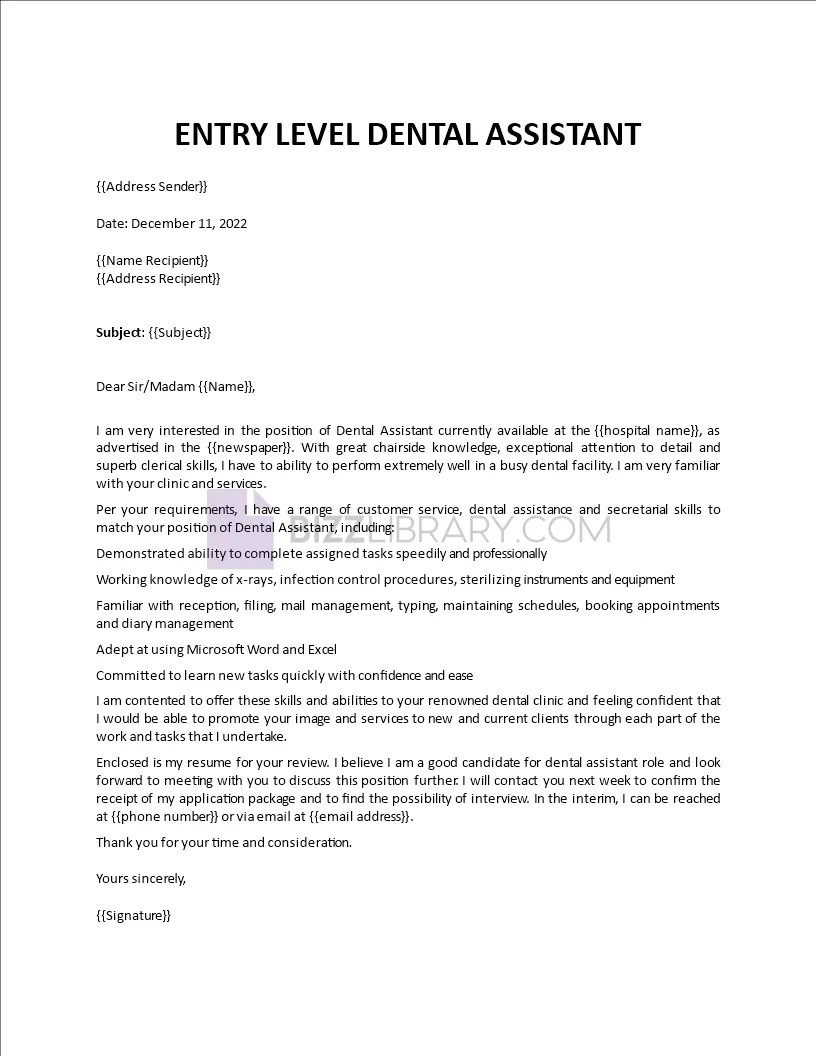Why You Need a Dental Assistant Cover Letter
In the competitive field of dental assisting, a compelling cover letter can be the key to unlocking your dream job. While your resume provides a snapshot of your qualifications, a cover letter allows you to showcase your personality, enthusiasm, and unique value proposition. It’s your chance to make a strong first impression and differentiate yourself from other applicants. A well-crafted cover letter demonstrates your genuine interest in the position and the dental practice, highlighting how your skills and aspirations align with their needs. Think of it as your personal introduction, setting the stage for an interview and ultimately, securing your opportunity in the dental field.
Understanding the Role of a Dental Assistant
Before crafting your cover letter, it is crucial to understand the core responsibilities of a dental assistant. Dental assistants play a vital role in supporting dentists and ensuring smooth patient care. Their duties can range from preparing treatment rooms and sterilizing instruments to assisting during procedures and taking patient histories. Understanding these responsibilities will enable you to tailor your cover letter, demonstrating how your skills align with the specific requirements of the job. This knowledge will also showcase your awareness of the profession and your commitment to providing excellent patient care, which is highly valued by employers.
Key Responsibilities of a Dental Assistant
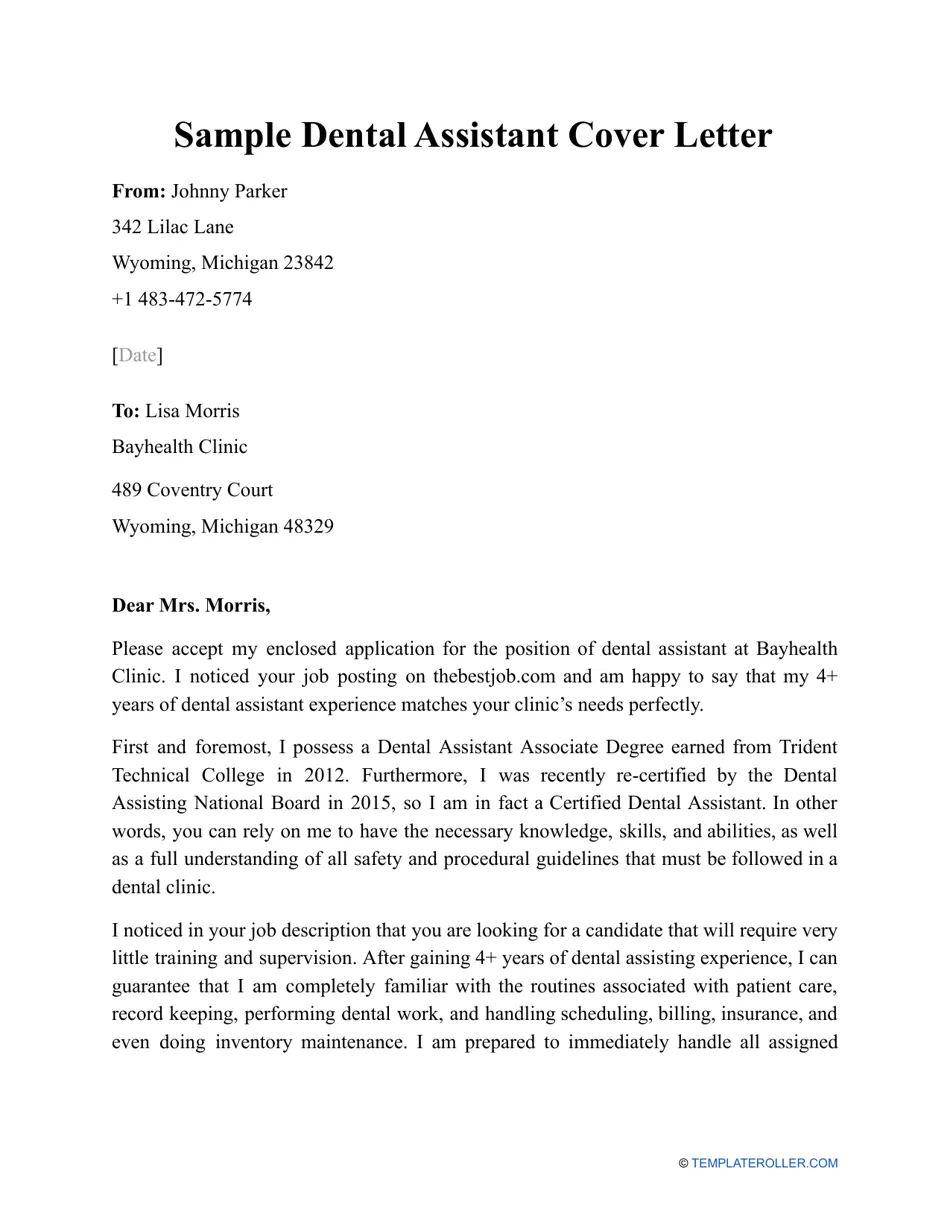
The responsibilities of a dental assistant are diverse, encompassing clinical and administrative duties. Clinically, they assist dentists during various procedures, such as fillings, extractions, and root canals. They prepare and sterilize instruments, take and develop dental radiographs, and provide patient education on oral hygiene. Administrative tasks include scheduling appointments, managing patient records, and handling insurance claims. A successful dental assistant possesses a blend of technical skills, such as proficiency in dental software, and soft skills like excellent communication and empathy. Highlighting your ability to perform these duties effectively in your cover letter is critical.
Crafting Your Cover Letter
Writing a cover letter can seem daunting, but with the right approach, you can create a compelling document that grabs the employer’s attention. The process involves several key elements, including a professional header, a personalized greeting, a strong opening paragraph, well-structured body paragraphs, and a confident closing. Each part of your cover letter plays a crucial role in conveying your qualifications, enthusiasm, and suitability for the position. By following a structured approach, you can ensure your cover letter is clear, concise, and tailored to the specific requirements of the job. Remember, a well-written cover letter can significantly improve your chances of getting an interview.
Header and Contact Information
Your header is the first thing an employer sees, so ensure it’s professional and easy to read. Include your full name, address, phone number, and professional email address. Use a clear font and simple formatting. If you have a LinkedIn profile, consider including the URL. This section sets the tone for your application, demonstrating your attention to detail and professionalism. Double-check all information to ensure accuracy, as even a small error can create a negative first impression. Ensure your contact information is up-to-date, so potential employers can easily reach you.
Greeting the Hiring Manager
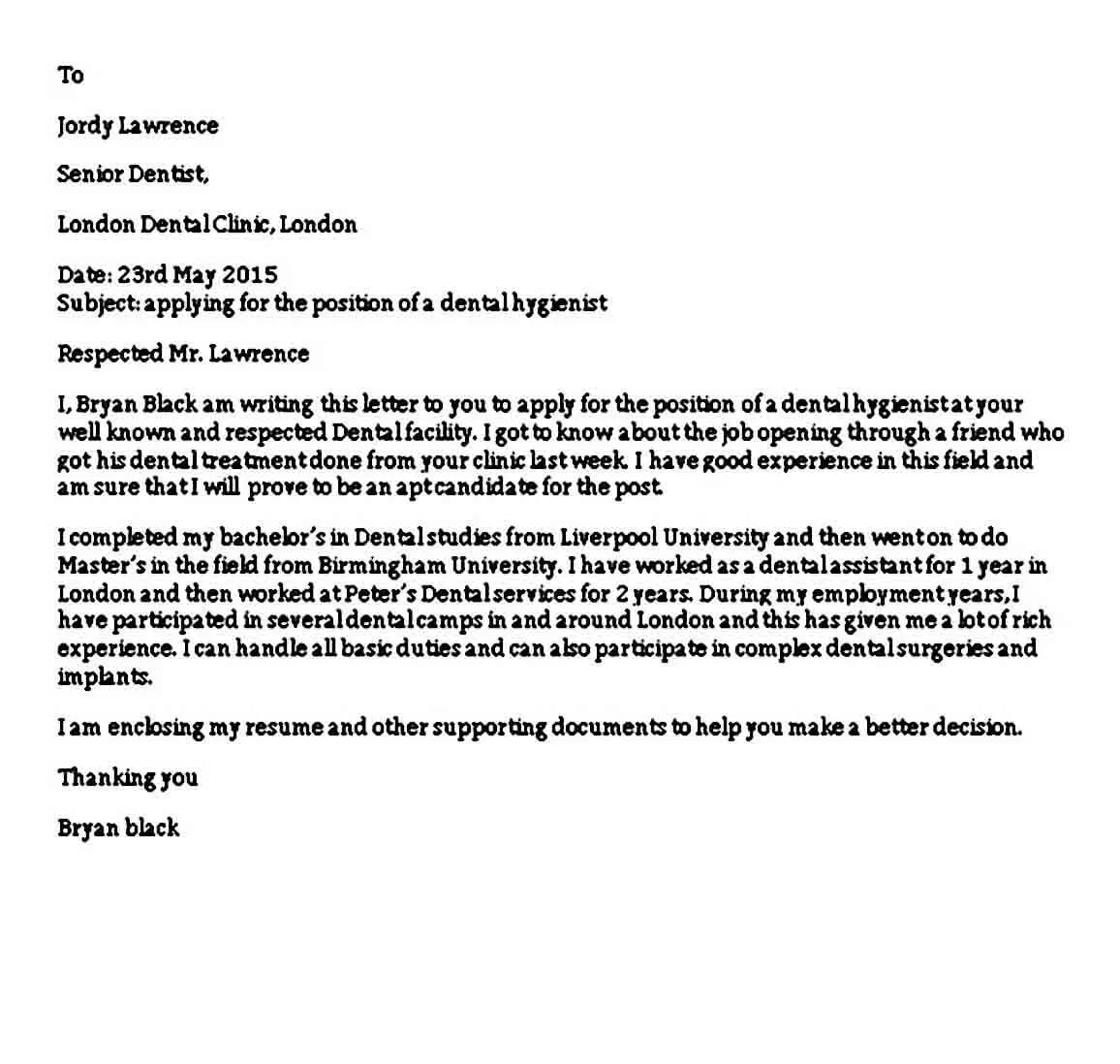
A personalized greeting shows you’ve taken the time to research the practice and address your letter to the appropriate person. Whenever possible, find out the hiring manager’s name and use it. If you can’t find a name, use a professional greeting like ‘Dear Hiring Manager.’ Avoid generic greetings such as ‘To Whom It May Concern,’ which can make your letter feel impersonal. Researching the dental practice’s website or LinkedIn profile can often provide the name of the hiring manager. Addressing the letter to a specific person demonstrates initiative and attention to detail, making a positive impression from the start.
The Opening Paragraph Making a Strong First Impression
The opening paragraph is your chance to grab the reader’s attention. Start with a concise statement of your interest in the position and how you learned about it. Then, briefly highlight your most relevant qualifications or skills. This is your hook - the statement that encourages the reader to continue reading. Be enthusiastic and specific. Avoid generic phrases like ‘I am writing to express my interest.’ Instead, use a sentence that immediately states your intention, such as, ‘I am writing to express my keen interest in the Dental Assistant position advertised on [Platform].’ Include a brief statement of your most relevant skills or experiences to create immediate interest.
Highlighting Your Skills and Qualifications
This is the core of your cover letter, where you demonstrate your suitability for the role. Focus on the skills and qualifications that align with the job description. Provide specific examples of your skills in action. Use keywords from the job posting to demonstrate that you have the skills the employer seeks. Avoid simply listing your skills; instead, describe how you’ve used them to achieve positive results. This section should provide compelling evidence of your abilities, making a strong case for why you are the best candidate for the position. This could include skills like assisting with procedures, patient communication, or software proficiency.
Emphasizing Relevant Skills
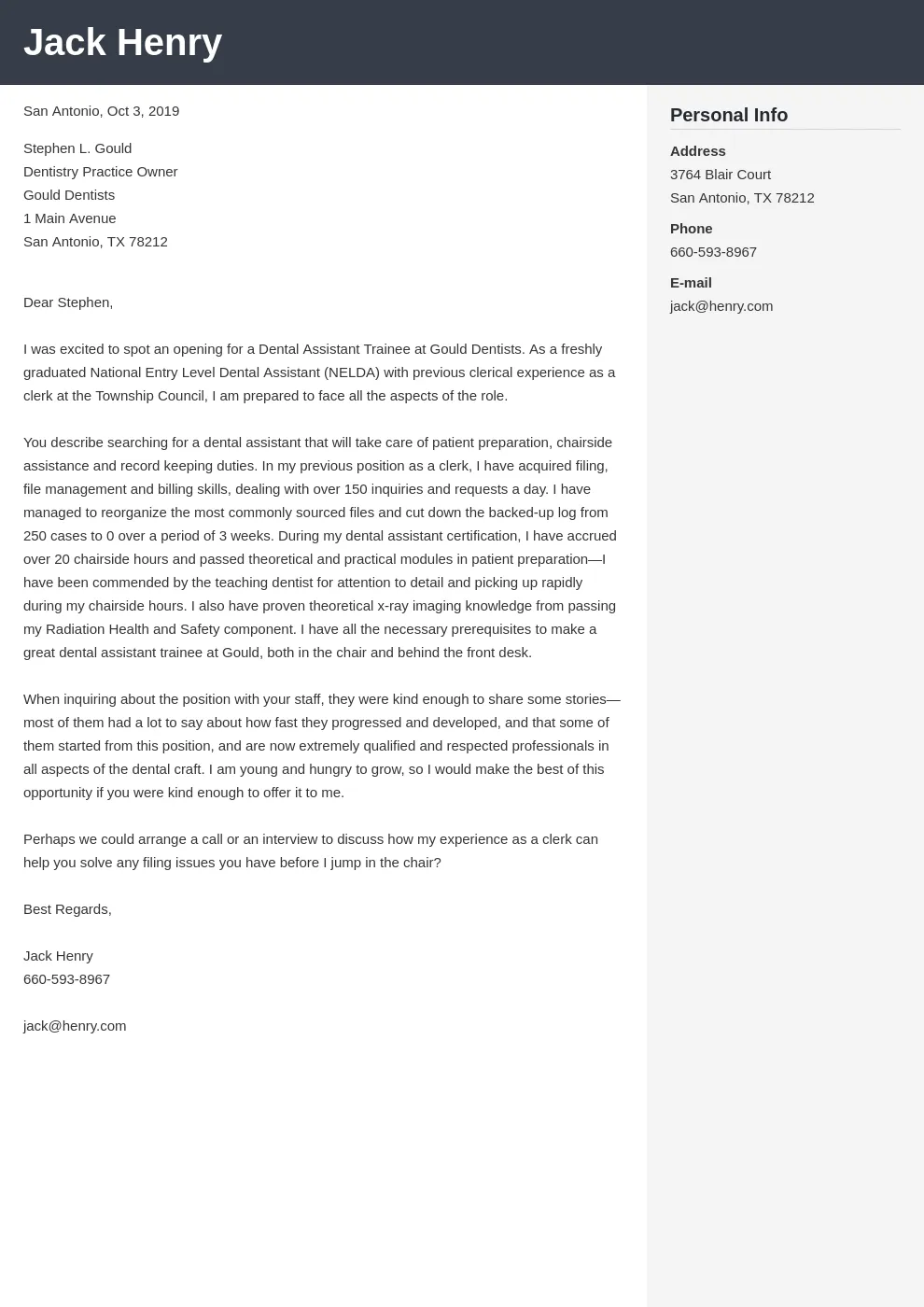
Identify the key skills required for the dental assistant position and highlight your proficiency in those areas. Common skills include assisting with dental procedures, taking and developing radiographs, sterilizing instruments, and patient education. Describe how you have used these skills effectively in previous roles or during your training. Use action verbs to describe your accomplishments and responsibilities. For example, instead of saying ‘Responsible for sterilizing instruments,’ say ‘Effectively sterilized dental instruments, ensuring a clean and safe environment for patients.’ Tailor your skills to match the specific requirements listed in the job description to increase your relevance.
Showcasing Educational Background
For entry-level positions, your education and training are essential. Mention your dental assisting certification or diploma and any relevant coursework. Briefly describe your experience in clinical settings, if applicable. If you are a recent graduate, provide details about your clinical rotations, highlighting any specific skills or experiences you gained. Even if you are still in school, you can mention relevant courses, projects, or volunteer experiences. This information shows your commitment to the field and your preparedness for the job. Be sure to include the name of your school, the dates attended, and any honors or awards received.
Demonstrating Soft Skills
Soft skills are crucial in dental assisting. These include communication, empathy, teamwork, and problem-solving. Provide examples of how you have demonstrated these skills in previous roles. For instance, if you’re good at communication, describe a situation where you effectively explained a procedure to a patient. If you are a good team player, describe how you collaborated with other team members to improve patient care. Highlight your ability to handle challenging situations with professionalism and a positive attitude. Employers highly value candidates who are not only technically proficient but also possess strong interpersonal skills and the ability to build rapport with patients and colleagues.
Expressing Your Enthusiasm and Passion
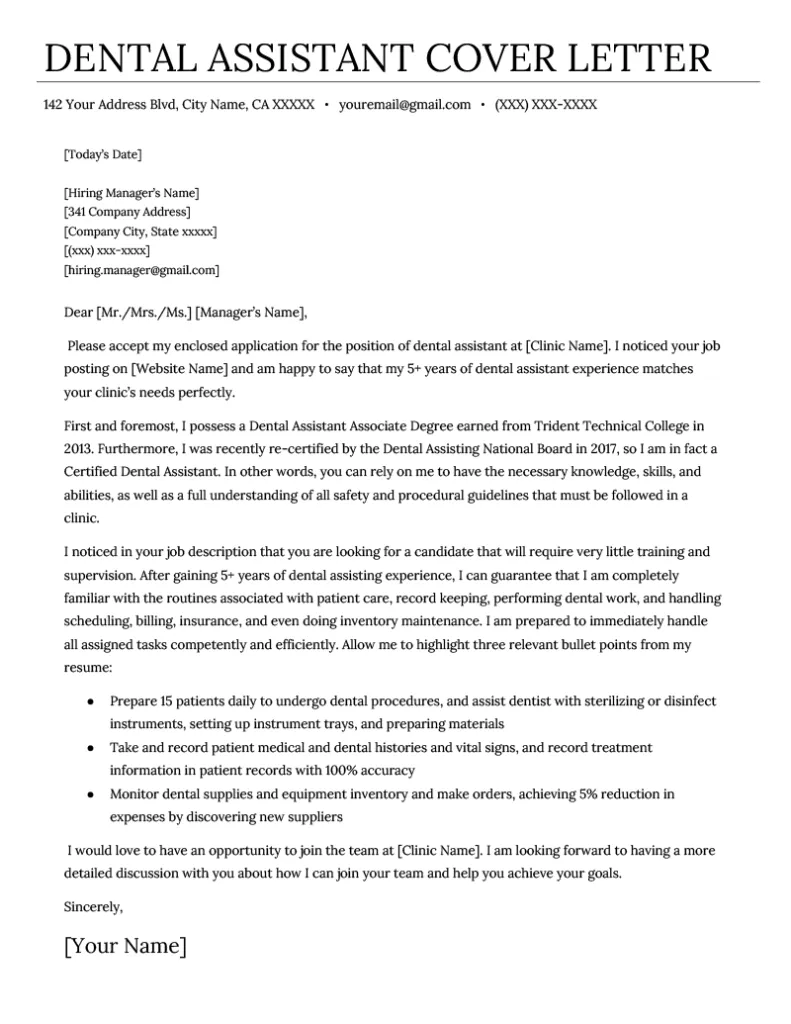
Let your enthusiasm for the dental assisting field shine through. Briefly explain what excites you about the profession and why you are passionate about patient care. Research the dental practice and mention what specifically interests you about their approach or values. Showing genuine interest makes you more memorable and demonstrates your motivation. This could be as simple as stating your admiration for their commitment to patient comfort or their use of advanced dental technology. Expressing your passion helps the employer understand your long-term commitment and that you genuinely want to contribute to their team.
The Body Paragraphs Showcasing Your Value
The body paragraphs are where you expand on your skills and qualifications, providing specific examples to support your claims. Use these paragraphs to tell a story about your experiences and accomplishments. Structure your paragraphs logically, using the STAR method (Situation, Task, Action, Result) to describe your contributions. This format helps the employer understand the context, your role, your actions, and the outcome of your efforts. The body paragraphs should be compelling, demonstrating your abilities and illustrating how you have successfully handled various situations in the past. This section reinforces your value and showcases your skills.
Tailoring Your Letter to the Specific Job
Always tailor your cover letter to each job you apply for. Review the job description carefully and identify the key requirements. Then, customize your letter to address those specific needs. This shows that you have taken the time to understand the position and that you possess the skills and qualifications the employer is seeking. Mention the dental practice by name and express your interest in their specific services or values. Generic cover letters are easily spotted, so demonstrating that you have adapted your letter for the specific opportunity is crucial. This shows you care enough to go the extra mile.
Addressing the Employer’s Needs
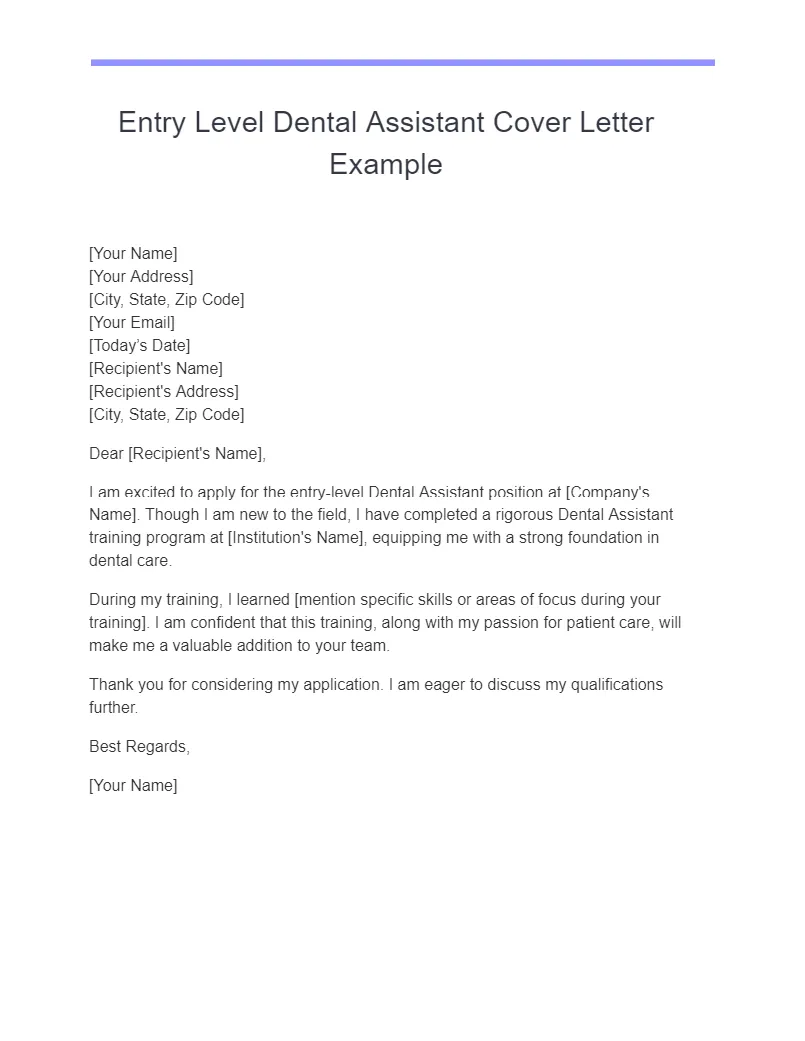
The employer’s needs should be at the forefront of your cover letter. Think about what the practice is looking for in a dental assistant. Are they seeking someone with experience in a specific area, such as orthodontics or pediatrics? Do they emphasize patient communication or the use of certain dental software? Address these needs directly in your letter, highlighting how your skills and experience align with their requirements. For example, if the job description mentions experience with digital x-rays, be sure to include this skill in your letter. Your goal is to show the employer how you can contribute to their practice and meet their specific needs.
Providing Specific Examples
Instead of simply stating your skills, provide concrete examples of how you have used those skills in the past. Use the STAR method to structure your responses. Start with the situation and the task you faced. Then, describe the action you took and the result you achieved. For instance, if you want to show your ability to handle patient communication, you might write, “In a previous role, I was tasked with explaining a complex procedure to a nervous patient (Situation/Task). I took the time to explain the procedure in simple terms and answered all of their questions, using diagrams to help them understand (Action). As a result, the patient felt more comfortable and confident, leading to a successful treatment and positive feedback (Result).” Providing specific examples makes your qualifications more credible and memorable.
The Closing Paragraph Call to Action
Your closing paragraph should reiterate your interest in the position, express your gratitude, and include a call to action. Thank the hiring manager for their time and consideration. State your availability for an interview and mention how they can contact you. A strong closing leaves a positive final impression and encourages the employer to take the next step. Keep it concise and professional. This is the final chance to convey your enthusiasm and make it clear that you are eager to move forward in the hiring process. A polite and professional close shows respect for the reader’s time and a proactive approach.
Expressing Gratitude
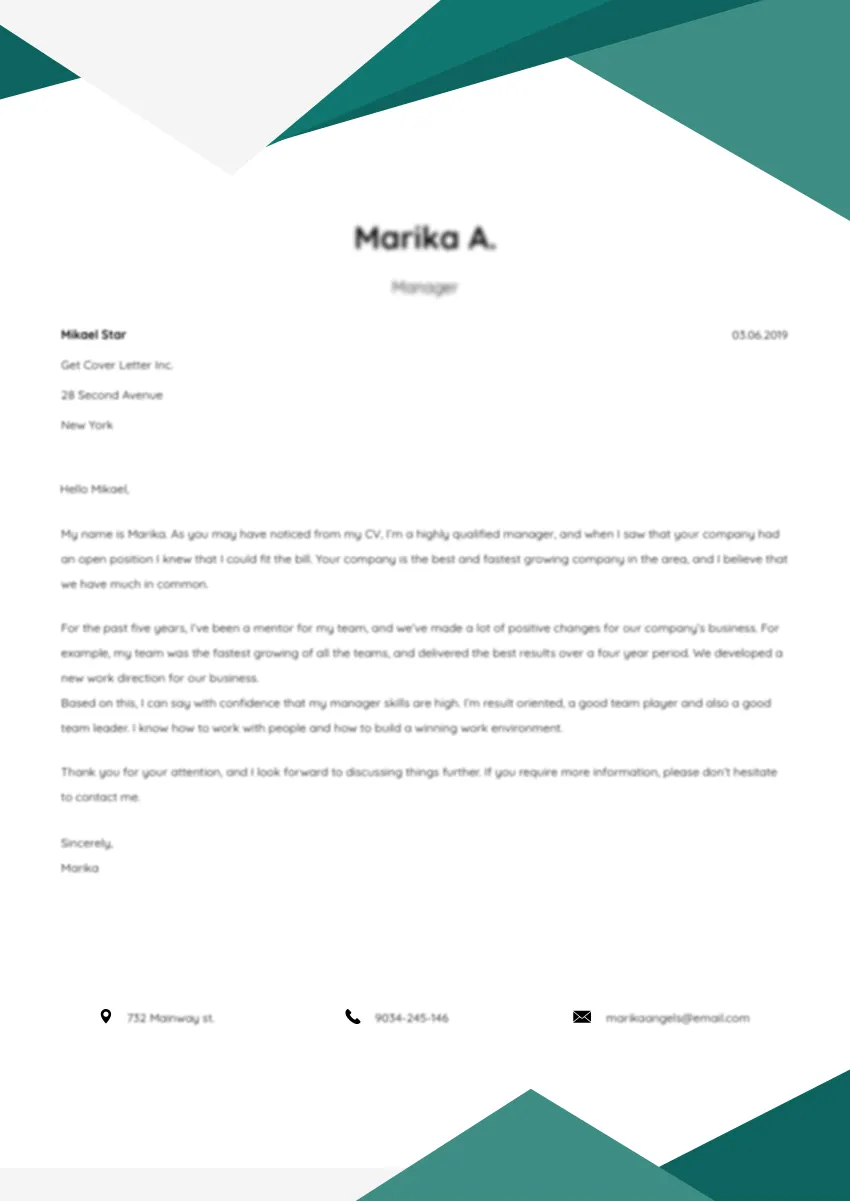
Expressing gratitude is a crucial part of a professional cover letter. Thank the hiring manager for their time and consideration. This shows respect and appreciation for the opportunity. A simple statement like, ‘Thank you for considering my application’ is sufficient. Expressing gratitude at the end of your letter leaves a positive and professional final impression. This demonstrates your professionalism and respect for the hiring process. It shows that you appreciate the effort the employer has put into considering your application, making you a more appealing candidate.
Requesting an Interview
Clearly state your availability for an interview and how the hiring manager can contact you. Make it easy for them to schedule the interview. Include your phone number and email address. Consider adding a line such as, ‘I am available for an interview at your earliest convenience, and can be reached by email at [your email address] or by phone at [your phone number].’ This proactive approach simplifies the next steps. By providing your contact information and expressing your willingness to interview, you make it easier for the employer to consider you for the position.
Proofreading and Formatting Your Cover Letter
Before submitting your cover letter, proofread it carefully and ensure it is properly formatted. Errors in grammar, spelling, and formatting can undermine your credibility. Proofreading shows attention to detail and professionalism, which are critical for dental assistants. Ensure your cover letter is free of any errors. Proper formatting includes using a professional font, consistent margins, and clear spacing. Your cover letter represents you, so make sure it is error-free and polished. This is one of the most important steps in the process, as it reflects your attention to detail.
Formatting for Professionalism
Choose a professional font, such as Times New Roman, Arial, or Calibri. Use a font size between 10 and 12 points for readability. Maintain consistent margins (typically one inch) throughout your letter. Use single-spacing within paragraphs and double-spacing between paragraphs. Left-align your text, and avoid justifying the text unless absolutely necessary. Ensure your letter has a clean and organized appearance. Well-formatted letters are easier to read and create a positive impression. Proper formatting highlights your attention to detail, a valuable skill in the dental field.
Proofreading for Errors
Carefully proofread your cover letter for any errors in grammar, spelling, and punctuation. Read the letter aloud to catch mistakes you might miss when reading silently. Ask a friend, family member, or career counselor to review your letter as well. Another set of eyes can often catch errors that you might overlook. Ensure your letter is free of typos and grammatical errors. Correct any sentences which seem too long. Small errors can make your cover letter less credible and hurt your chances of getting an interview. Thorough proofreading demonstrates your attention to detail.
Common Mistakes to Avoid
To maximize the impact of your cover letter, avoid common mistakes that can weaken your application. These mistakes can include generic language, focusing too much on yourself, and ignoring the job description. Avoiding these pitfalls will help ensure that your cover letter effectively showcases your qualifications and increases your chances of getting hired. By being mindful of these common errors, you can enhance your application and make a positive impression on potential employers.
Using Generic Language
Avoid using generic phrases and clichés that could apply to any job. Instead, use specific language that reflects your skills and experiences. Tailor your letter to the specific job and the dental practice you are applying to. Generic language makes your letter sound impersonal and uninspired. Be specific about your skills and experiences to demonstrate your genuine interest. Replace vague statements with concrete examples of your accomplishments. Instead of ‘I am a hard worker,’ say, ‘I consistently complete assigned tasks efficiently and effectively.’ Use unique language to show your individuality and make your letter stand out.
Focusing on Yourself Too Much
While it’s important to highlight your skills, avoid making your cover letter entirely self-focused. Frame your qualifications in terms of how you can contribute to the dental practice and meet the employer’s needs. Focus on what you can bring to the team and how you can help the practice succeed. Instead of saying, ‘I want this job because I need experience,’ say, ‘I am confident that my skills in patient communication and instrument sterilization will contribute to a smoother workflow and a positive patient experience.’ Show the employer how you can solve their problems.
Ignoring the Job Description
Failing to address the requirements listed in the job description is a major mistake. The job description is your roadmap to a successful cover letter. Carefully review the requirements and highlight the skills and qualifications that match the job posting. The more you can demonstrate that you meet the employer’s specific needs, the better your chances of securing an interview. Ignoring the job description makes your letter less relevant and demonstrates a lack of attention to detail. Tailor your letter to the specific skills and requirements stated in the job posting.
Finalizing and Submitting Your Cover Letter
Once you have written, proofread, and formatted your cover letter, it is time to finalize and submit it. The final steps include saving your letter in the correct format and submitting it with your resume. Properly finalizing your cover letter ensures it is ready for distribution. Make sure to double-check all the information before submission. Following these steps ensures a smooth and professional application process. Take these steps to submit your cover letter with confidence.
Saving Your Letter
Save your cover letter in a professional file format, such as PDF (Portable Document Format). PDFs ensure that your formatting will remain consistent, regardless of the recipient’s operating system or software. Name the file clearly, using your name and the job title. For example, use ‘JaneDoe_DentalAssistantCoverLetter.pdf.’ This makes it easy for the hiring manager to identify your letter. Always double-check that the file is saved and accessible before submitting your application. Make sure your cover letter is saved in a way that reflects well on you.
Submitting Your Letter with Your Resume
When submitting your cover letter, always include it with your resume. Follow the employer’s instructions for submitting your application. If the instructions are not provided, attach both documents to your email or online application. Customize your email subject line to clearly indicate the position you are applying for. For example, you could write, ‘Application for Dental Assistant Position - Jane Doe.’ Double-check that you have included both your cover letter and your resume before submitting your application. Remember that a well-crafted cover letter and resume are critical to your job search success.
